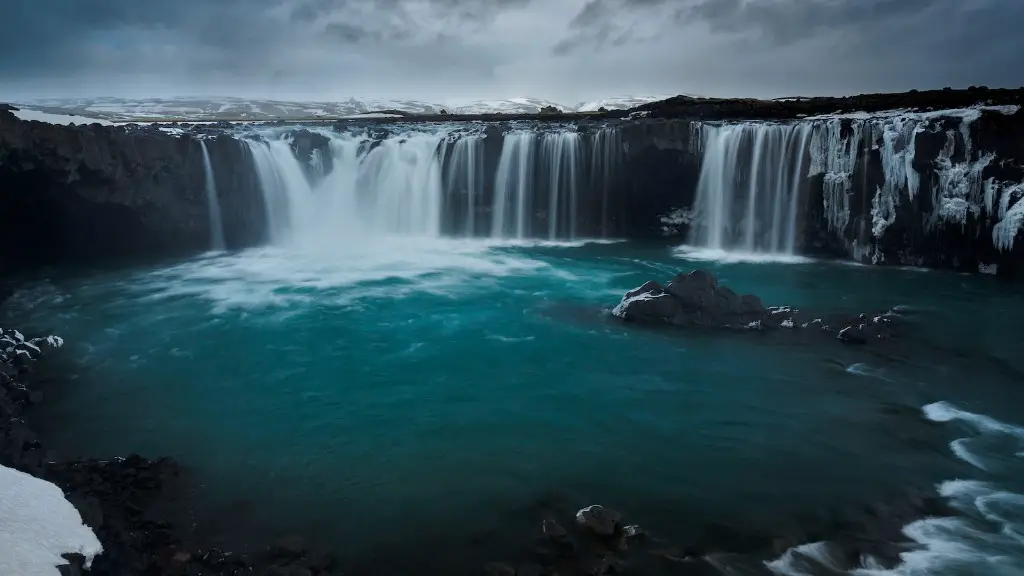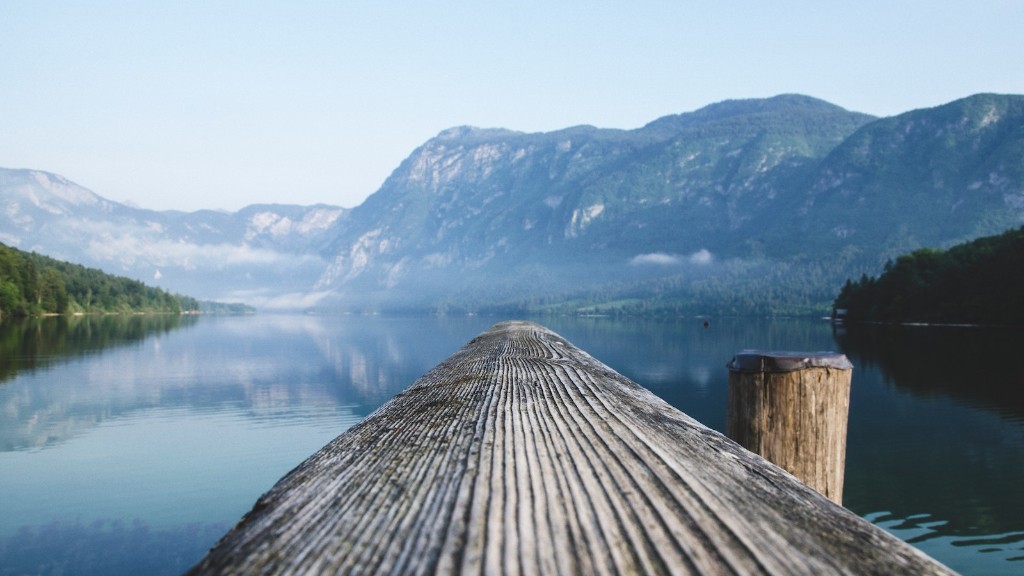The Nile River has long been known as one of the world’s most important and powerful rivers. It is an iconic symbol of Egypt and has been essential to the country’s history, culture and politics for thousands of years. The Nile Valley is home to some of the world’s most famous sites, from the magnificent pyramids at Giza to the Great Sphinx. The river itself has been the subject of many myths, tales, and stories and has even been described as the lure of ancient Egypt. But what is so special about the Nile?
The Nile River is the longest river in the world and spans more than 4,000 miles from its source in the Ethiopian highlands to the Mediterranean Sea. It is also the lifeline of Egypt, providing freshwater for drinking, irrigation, transportation, and other uses. According to experts, the river’s flow has been essential for sustaining life in the region for thousands of years. The river’s floodwaters coincided with the seasonal flooding of the Nile Valley each year, providing an abundant supply of fertile soil for cultivation. In addition to providing drinking and irrigation water, the Nile also allowed for travel within the region, both by foot and via boats.
The construction of the Aswan Dam in the 1960s changed the face of the region and the flow of the Nile River forever. The dam captured much of the river’s water and prevented its annual flooding of the valley. The dam also allowed for the generation of hydroelectric power and the increased regulation of the flow of the river. It allowed for improved irrigation, transportation, and other water-based activities. It has also had an effect on the ecology of the region, with new species of plants and animals—including some endangered species—thriving in the area since its construction.
In terms of its impact on Egyptian culture, the Nile River has been an integral part of the region’s history and culture for thousands of years. Ancient Egyptians believed the river was the source of all life, as it provided them with food, water, and transportation. They believed the gods Horus and Set watched over the river, and that it was a sacred site. The river was also home to a variety of gods and goddesses, who were part of the core beliefs of the ancient Egyptians.
The Nile River remains an important source of water, food, and transportation in modern Egypt. It is also an important source of spiritual and cultural meaning, with many people in the region still believing in the power of the river and its gods. In recent years, the Nile has played a role in shaping the politics and culture of Egypt, as well as regional stability. The river is an iconic symbol of the country and its history, and will continue to be a source of life and inspiration for generations to come.
Economics of the Nile
The Nile River has been an essential source of economic activity throughout its long history. Fishing, agriculture and the manufacturing of goods have long been some of the primary sources of income for those living along the river. To this day, communities in regions near the Nile are highly dependent on the river for sustenance and income. Many of them depend on traditional fishing, agriculture, and trade activities, particularly tourism, to make ends meet.
The Nile also provides an important source of electricity to many of the countries it runs through, such as Egypt. The Aswan Dam was built to provide hydroelectric power, which has helped to drive economic growth in the region. Additionally, it has allowed for increased irrigation, transportation, and other water-based activities, which has helped to boost the region’s economy. The river is also an integral part of trade in the region.
In recent years, countries along the Nile have made efforts to develop infrastructure projects that aim to improve transportation, irrigation, and other water utilisation projects. They have also taken steps to promote and boost tourism in the region, making the most of its historical and cultural significance. All of these efforts are aimed at improving the economic wellbeing of those living in the region and depend on the Nile.
The economic effects of the river, both historically and in the present day, cannot be overstated. It has been essential to regional prosperity for thousands of years and continues to play a major role in the development and stability of the countries it flows through.
Nile and Agriculture
The Nile River has long been a source of sustenance and prosperity for those living along its length. Agriculture has been an integral part of regional life for centuries, with the Nilotic floodplain providing the perfect conditions for growing crops. The flooding of the river’s riverbanks on a seasonal basis provided an abundant supply of fresh soil, allowing for the cultivation of a wide range of grains, vegetables, fruits, and other food products.
Over the years, the cultivation of crops has been revolutionised by advancements in irrigation technology. The modern irrigation systems used by many of the countries along the Nile ensure a consistent and reliable supply of water for crops, making it easier for farmers to grow crops that are resistant to drought and other environmental changes. Modern agricultural practices, such as the use of fertilisers, have also helped to boost production, allowing for greater yields and higher quality products. This has in turn allowed for larger numbers of people to be fed with fewer resources.
In addition to the traditional crops grown along the river, the region is home to a variety of exotic and locally grown produce. This includes fruits like mangoes, papayas, and bananas, as well as vegetables like eggplant and okra. Livestock, such as cows, sheep, and goats, are also raised in the area, providing a source of income for those living in the region.
The Nile has been an essential source of sustenance and prosperity for those living in its vicinity for thousands of years, and continues to play a vital role in the region’s economy today. It has enabled the cultivation of a variety of crops, both traditional and exotic, that help to sustain the population and boost the economy.
Spiritual Significance of the Nile
The Nile River has had a deeply spiritual significance for thousands of years. Ancient Egyptians believed the river was the source of all life, as it provided them with food, water, and transportation. It was also believed to be the home of a variety of gods and goddesses, who were part of the core beliefs of the ancient Egyptians. The river also featured prominently in their mythology, such as the tale of Isis and Osiris.
Today, the Nile is still thought to be a source of spiritual and magical power for those living in its vicinity. Many people in Egypt share a deep reverence for the Nile and its gods. Special ceremonies and rituals, such as those conducted on festivals like Epopee are still conducted by those living in the region, in which the Nile is praised and worshipped. This reverence for the river is evident in the artwork and literature of the region, as well as in the popular music and dance that celebrate its significance.
The spiritual significance of the Nile is also a source of inspiration for artists, writers, and filmmakers in the region. Many feature the river in their work, which helps to perpetuate its myth and magic in modern culture. The reverence for the river is deeply ingrained in the culture and heritage of Egypt, and is an important part of the region’s identity.
The spiritual significance of the Nile remains strong to this day. It is an integral part of the region’s identity and heritage, and continues to be a source of inspiration for writers, artists, and filmmakers. It’s myth and magic are still alive for those living along the river, as well as for those of us who visit this majestic river.
Environmental Impact of the Nile
The Nile River has had a major impact on the environment in the region, both positively and negatively. It acts as an important source of water for drinking, irrigation, and transportation, but can also cause floods and disease if it is not managed properly.
In recent years, the river has come under increasing pressure due to population growth and development. The construction of dams and other infrastructure projects has had an effect on the river’s ecology, as well as its flow and volume. There has also been an increase in pollution and runoff from agriculture, industry, and urban development, with potentially devastating consequences for the local environment.
In response to these challenges, there have been a number of initiatives aimed at protecting the river and its surrounding landscapes. These include the establishment of protected areas, such as national parks and protected reserves, as well as the enforcement of regulations to minimise pollution. Additionally, countries along the river have made efforts to promote sustainable development in order to reduce the environmental impacts of their activities.
The environmental impact of the Nile continues to be a major issue for the region. There is a need to manage the river’s resources in a sustainable manner in order to protect it for future generations. It is essential that policies are put in place that are effective in protecting the environment, while also ensuring the wellbeing of those living in the vicinity of the river.
Conclusion
The Nile River is one of the world’s most iconic rivers, and has been a source of life and inspiration for thousands of years. It has been an integral part of the culture, history and spiritual life of the region, and its economic importance cannot be overstated. Today, the river continues to be an important source of water, food, and transportation in the region, while also providing a source of spiritual and cultural meaning. It is a symbol of life and hope, and its presence will be felt for generations to come.





